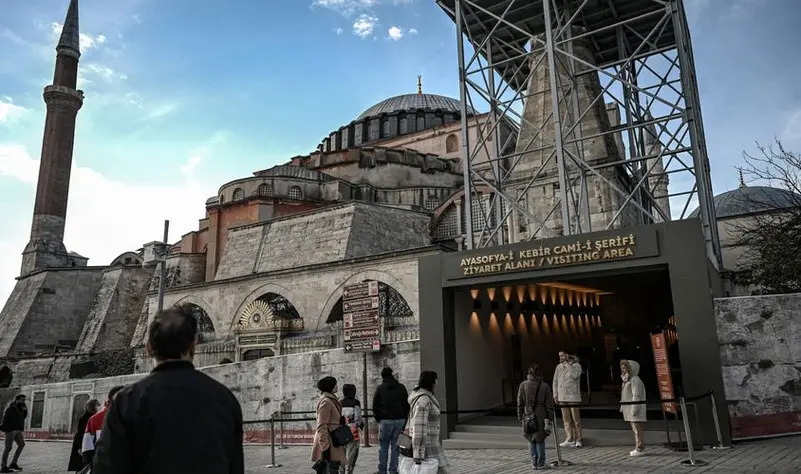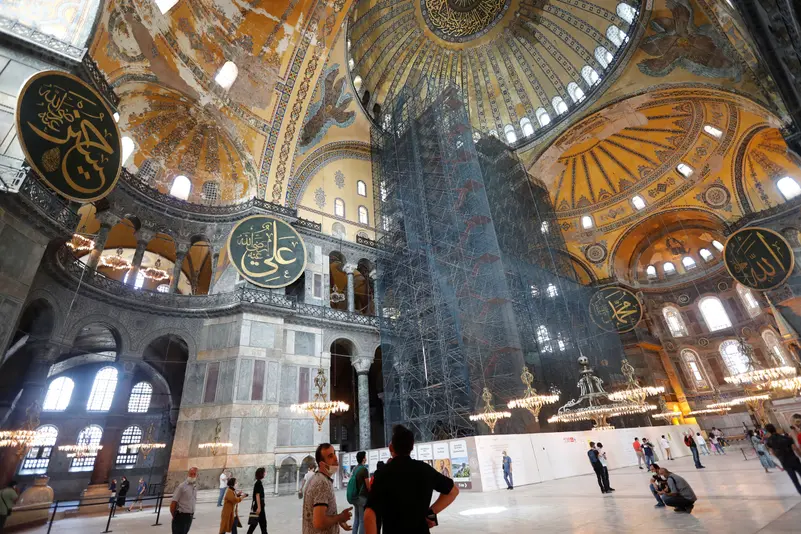Turkey’s iconic Hagia Sophia Mosque : A Journey from Free Entry to Paid Admission for Tourists
Istanbul, Turkey- The Hagia Sophia Mosque, a monumental site steeped in history, has introduced an entry fee for tourists. As of Monday, visitors will need to pay approximately $28 to explore the architectural marvel, a UNESCO World Heritage site known for its striking blue tiles and a blend of Byzantine and Islamic artistry.

An aerial view of the Byzantine-era monument of Hagia Sophia in Istanbul. (AFP)
The Hagia Sophia Mosque has undergone several transformations over the centuries. Originally an Orthodox cathedral, it was repurposed into a mosque, then turned into a museum in 1934, and once again became a mosque in 2020. This change underscores Turkey’s rich and diverse cultural heritage.
New Entry Protocol:
The Turkish tourism ministry announced that the new entry system aims to respect the sanctity of the mosque while allowing tourists to appreciate its grandeur. The entrance is now strategically located near the Topkapi Palace Museum, directing visitors to a specially designed tunnel and ramp system. This route leads to the gallery floor, offering an unobtrusive view of the mosque’s sanctuary floor and its Ottoman and Byzantine features.
From January 15, entrance to Hagia Sophia for tourists will cost 25 euros. pic.twitter.com/AoY5P78OT3
— S p r i n t e r (@Sprinter99800) January 13, 2024
Enhancements for Tourists:
The mosque now boasts modern security and safety features, including surveillance cameras and fire detection systems, ensuring a secure experience for its visitors. Moreover, tourists can rent headsets with QR codes, providing information in 23 languages, enhancing the educational aspect of the visit.

The authorities have undertaken significant efforts to preserve the Hagia Sophia’s legacy. Restoration and conservation work on the marble coverings and wooden railings of the gallery floor were carried out, ensuring the site remains in pristine condition for future generations.

In conclusion, the Hagia Sophia’s transition to a paid entry model marks a new chapter in its storied history. While it may alter the dynamic of visiting this iconic site, it also reflects the ongoing efforts to preserve and maintain one of the world’s most treasured cultural landmarks.

